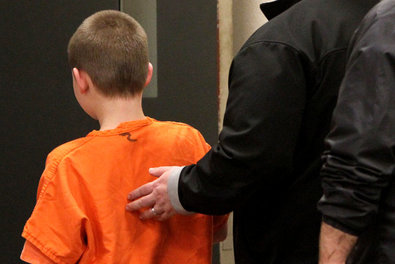The American justice system has long debated the issue of whether juveniles should be tried as adults. With increasing concerns over crime, some states have implemented laws that allow minors to be prosecuted in adult courts. However, numerous studies, expert opinions, and legal precedents suggest that treating juveniles as adults in the criminal justice system is not only ineffective but also detrimental to their rehabilitation and societal reintegration.
This article explores the reasons why juveniles should not be tried as adults, citing recent data, psychological research, and legal perspectives.

1. Juvenile Brains Are Not Fully Developed
Scientific research has repeatedly confirmed that the human brain does not fully develop until the mid-20s. According to the National Institute of Mental Health (NIMH), the prefrontal cortex—the part of the brain responsible for decision-making, impulse control, and understanding consequences—is still developing in teenagers.
Why This Matters:
- Young offenders are more impulsive and less capable of making rational decisions compared to adults.
- They are highly susceptible to peer pressure and external influences.
- Their ability to evaluate long-term consequences is significantly weaker than that of adults.
This developmental immaturity suggests that juveniles should be given the opportunity for rehabilitation rather than subjected to harsh punishments designed for fully mature adults.
2. Higher Risk of Recidivism
Studies show that juveniles tried as adults are more likely to re-offend compared to those who go through the juvenile justice system. According to the Office of Juvenile Justice and Delinquency Prevention (OJJDP), minors placed in adult correctional facilities are 34% more likely to be rearrested than those who remain in the juvenile system.
Reasons for Higher Recidivism:
- Exposure to hardened criminals in adult prisons fosters more criminal behavior.
- Juveniles in adult prisons often experience abuse, violence, and psychological trauma, making rehabilitation harder.
- They are deprived of education and skill-building programs necessary for reintegration into society.
Juvenile justice systems are specifically designed to rehabilitate young offenders, offering counseling, education, and mentorship—opportunities that adult prisons do not provide.
3. Risk of Physical and Psychological Harm in Adult Prisons
Juveniles incarcerated in adult prisons face significant risks of sexual abuse, physical assault, and psychological trauma. The Prison Rape Elimination Act (PREA) of 2003 acknowledges that youth offenders are at the highest risk of sexual victimization in adult facilities.
Concerning Statistics:
- A 2019 Bureau of Justice Statistics (BJS) report found that juveniles in adult prisons were five times more likely to be sexually assaulted than those in juvenile detention centers.
- A study by the Equal Justice Initiative (EJI) revealed that minors in adult prisons suffer from higher rates of depression, anxiety, and suicidal tendencies.
Locking up juveniles with adult offenders not only exposes them to violence but also hinders their psychological and emotional development.
4. The Juvenile Justice System Is Designed for Rehabilitation
Unlike adult prisons, the juvenile justice system focuses on rehabilitation rather than punishment. Programs within juvenile detention centers help young offenders develop skills, receive mental health treatment, and complete their education.
Benefits of the Juvenile Justice System:
- Provides mental health counseling and therapy tailored to young offenders.
- Offers educational programs that ensure juveniles continue their schooling.
- Uses alternative sentencing options like probation, community service, and mentorship programs.
A 2022 report by the Annie E. Casey Foundation found that juveniles who went through rehabilitation programs had a 60% lower recidivism rate compared to those placed in adult prisons.
5. Juvenile Crime Rates Are Declining
Contrary to public perception, juvenile crime has been steadily decreasing over the past two decades. According to the FBI’s Uniform Crime Reporting (UCR) Program, juvenile arrests for violent crimes dropped by over 70% between 1994 and 2022.
Why This Matters:
- The declining crime rate suggests that harsher punishments are not necessary.
- Preventative measures, such as community programs and early intervention, are proving more effective.
- Locking up juveniles as adults goes against the trend of reformative justice policies.
Many experts argue that instead of trying minors as adults, policymakers should focus on expanding rehabilitation programs and addressing the root causes of juvenile delinquency.
6. Racial Disparities in Juvenile Convictions
Data from the Sentencing Project (2023) highlights racial disparities in the treatment of juveniles within the justice system. Black and Hispanic youth are disproportionately transferred to adult courts compared to their white counterparts.
Shocking Statistics:
- Black juveniles are 4.6 times more likely than white juveniles to be tried as adults.
- Hispanic youth are 2.5 times more likely to be transferred to adult courts.
This racial bias suggests that trying juveniles as adults perpetuates systemic inequality, making it crucial to reform the current system.
Frequently Asked Questions (FAQs)
Q1: What crimes lead to juveniles being tried as adults?
Ans: Serious crimes such as murder, aggravated assault, and armed robbery often lead to juveniles being charged as adults. However, laws vary by state.
Q2: Do all states allow juveniles to be tried as adults?
Ans: No. Some states have abolished this practice, while others still allow it under certain conditions. California, Vermont, and Massachusetts have implemented reforms reducing juvenile transfers to adult courts.
Q3: What is the youngest age at which a child can be tried as an adult in the U.S.?
Ans: It varies by state. Some states allow children as young as 10 years old to be transferred to adult court, while others set the minimum age at 14 or 16.
Q4: What alternative solutions exist for juvenile offenders?
Ans: Diversion programs, mental health counseling, rehabilitation centers, and education-focused juvenile detention centers are all alternatives to adult prosecution.
Q5: Has any state successfully reformed its juvenile justice system?
Ans: Yes. States like Missouri and Oregon have successfully implemented rehabilitation-focused programs, leading to lower recidivism rates among youth offenders.
Conclusion
The evidence overwhelmingly supports the idea that juveniles should not be tried as adults. Their brains are still developing, they face extreme risks in adult prisons, and they have a much higher chance of rehabilitation when placed in a system designed for their needs. The juvenile justice system exists to reform young offenders, and sending them to adult courts only exacerbates the problem.
Instead of imposing harsh penalties, society must invest in preventative measures, education, and mental health resources to guide young offenders toward a better future. Juvenile crime is declining, and now is the time to focus on rehabilitation over retribution.



